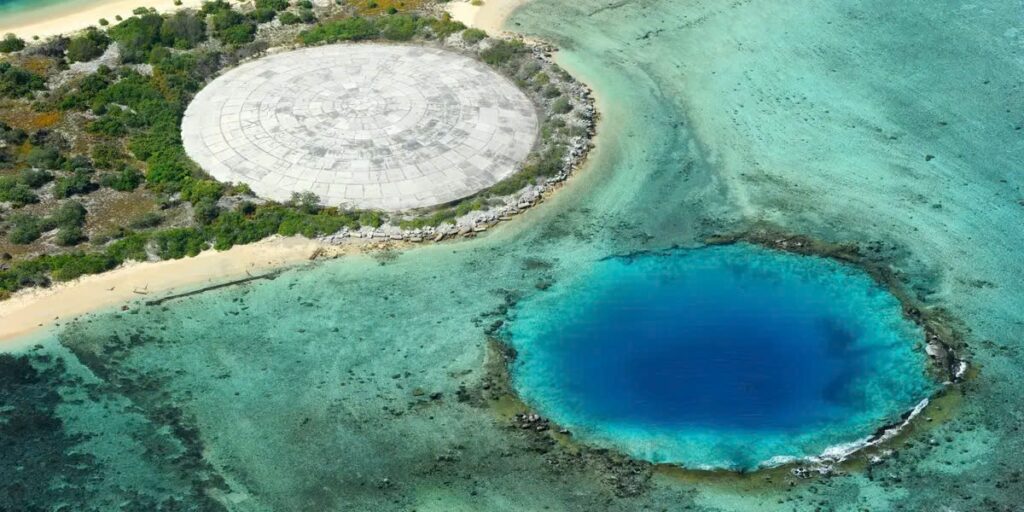The Cold War’s Toxic Landmark in the Marshall Islands
A Concrete Crypt for Nuclear Waste
Deep within the Pacific Ocean, amidst the picturesque Marshall Islands, lies a chilling testament to the Cold War – the Runit Dome. Constructed from 1977 to 1980, this enormous concrete edifice, known as “The Tomb,” was intended to securely contain radioactive waste resulting from U.S. nuclear tests. Yet, as time goes by, this containment measure is increasingly resembling a ticking time bomb.
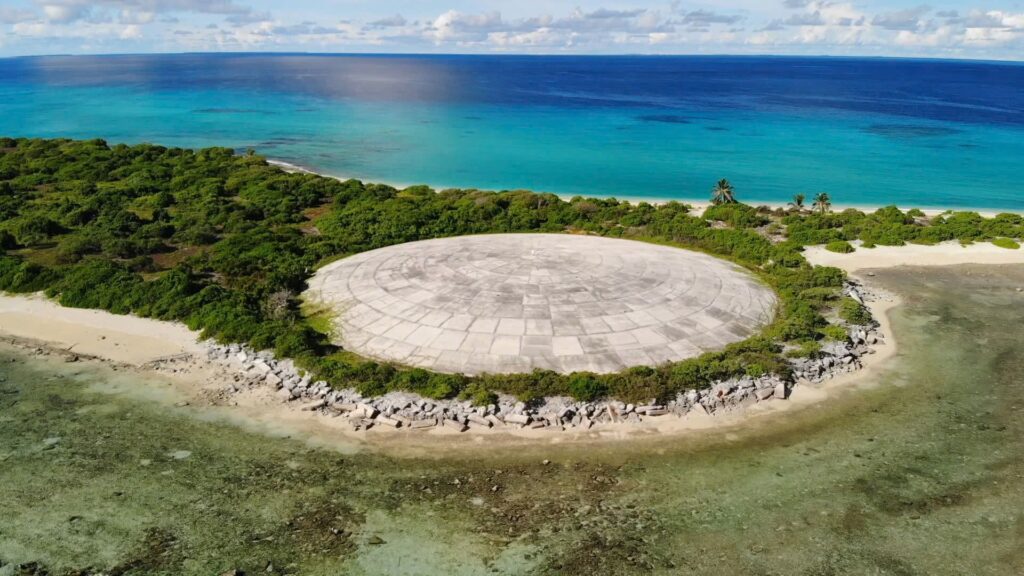
The Marshall Islands: America’s Nuclear Playground
From Paradise to Testing Site
During the mid-20th century, the U.S. government identified the isolated Marshall Islands as an ideal site for nuclear experimentation. Between 1946 and 1958, 67 nuclear and atmospheric tests ravaged the atolls of Enewetak and Bikini. The most infamous of these was Castle Bravo, a hydrogen bomb that was 1,000 times stronger than those dropped on Hiroshima and Nagasaki.
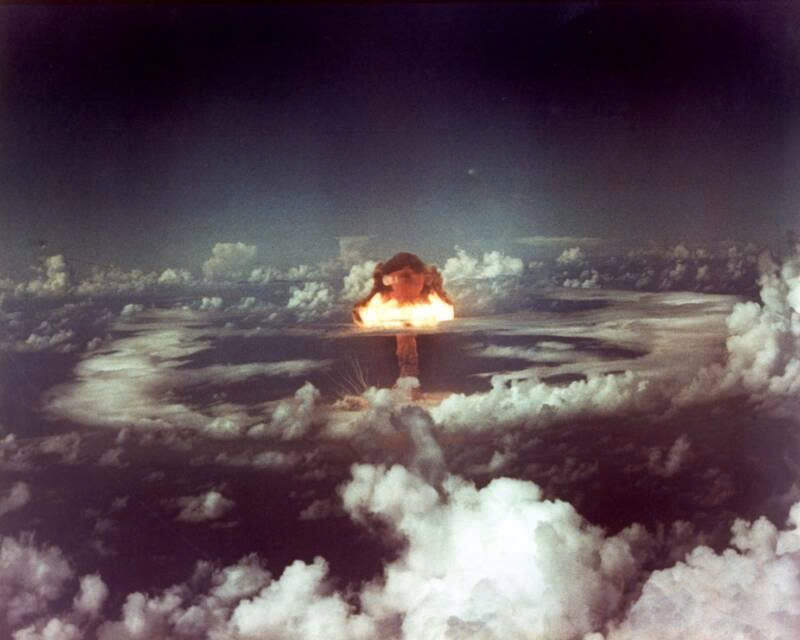
The Intensifying Arms Race
As Cold War tensions heightened, so did the number of tests conducted. In just 1958, an astonishing 33 bombs were detonated over a span of months. While the Limited Test Ban Treaty of 1963 curtailed atmospheric tests, underground and biological testing persisted throughout the 1960s.
The Emergence of a Concrete Behemoth
A Defective Clean-Up Effort
By the 1970s, the catastrophic consequences of nuclear testing could no longer be ignored. Under mounting pressure from local residents, the U.S. government initiated a clean-up operation. Their approach? To bury radioactive debris in a crater on Runit Island and encase it within a concrete dome. However, U.S. servicemen who assisted in constructing the dome later reported severe health complications due to radiation exposure.
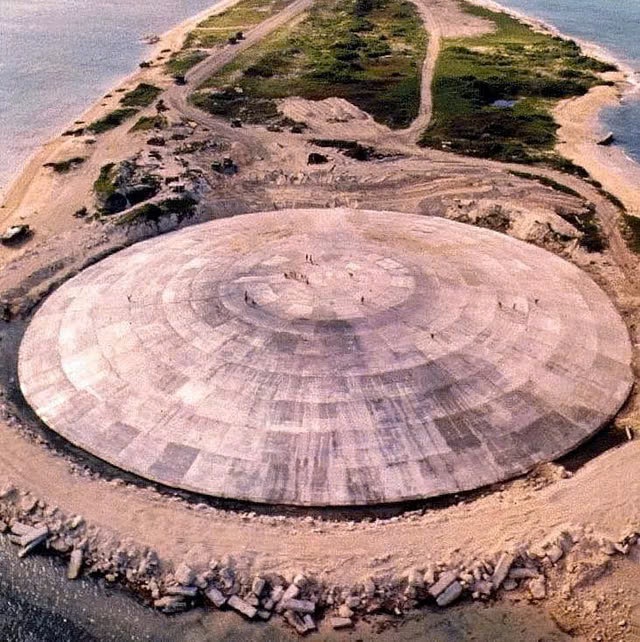
A Looming Disaster
Today, the Runit Dome serves as a stark reminder of nuclear recklessness. With fissures developing and climate change threatening its structural integrity, the dome poses a significant risk of disaster. Should it be compromised, radioactive materials could seep into the Pacific Ocean, jeopardizing nearby communities and marine life.
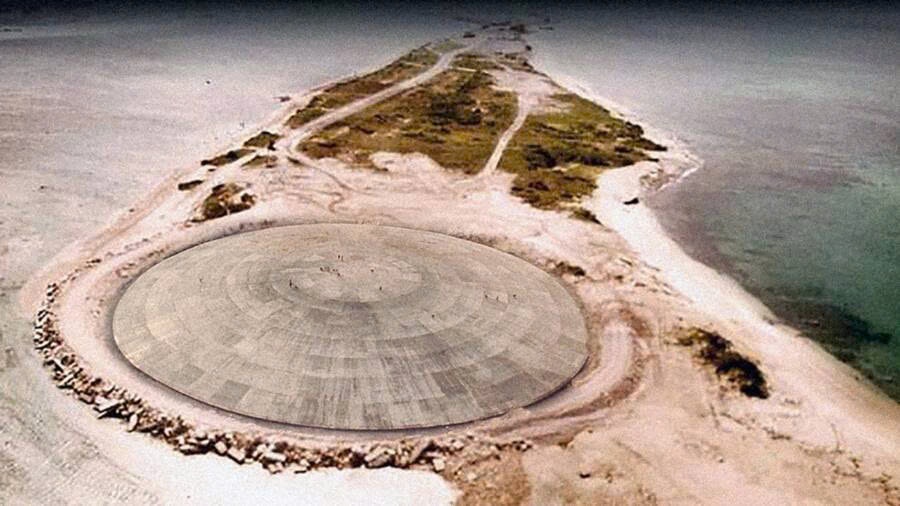
The Human Toll of Nuclear Ambitions
Voices from Ground Zero
The narrative of the Runit Dome is closely linked to the experiences of the Marshallese people. Survivors such as Nerje Joseph, who witnessed the Castle Bravo explosion as a child, have grappled with its repercussions for years. The tests upended traditional lifestyles and left behind a legacy of health challenges.
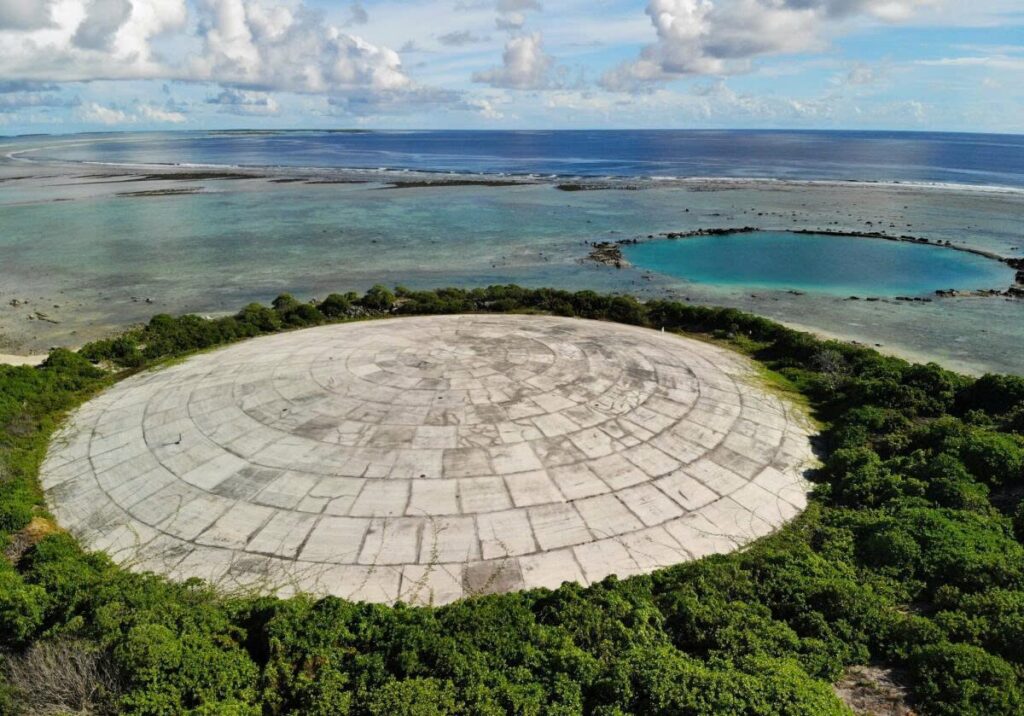
A Call for Global Responsibility
The Runit Dome transcends being merely a deteriorating structure; it embodies historical injustices and environmental negligence. As climate change threatens to worsen the situation, it is imperative for the international community to take action. The story of the dome highlights the enduring consequences of nuclear testing and emphasizes the pressing need for collective efforts to rectify past mistakes and safeguard future generations.
